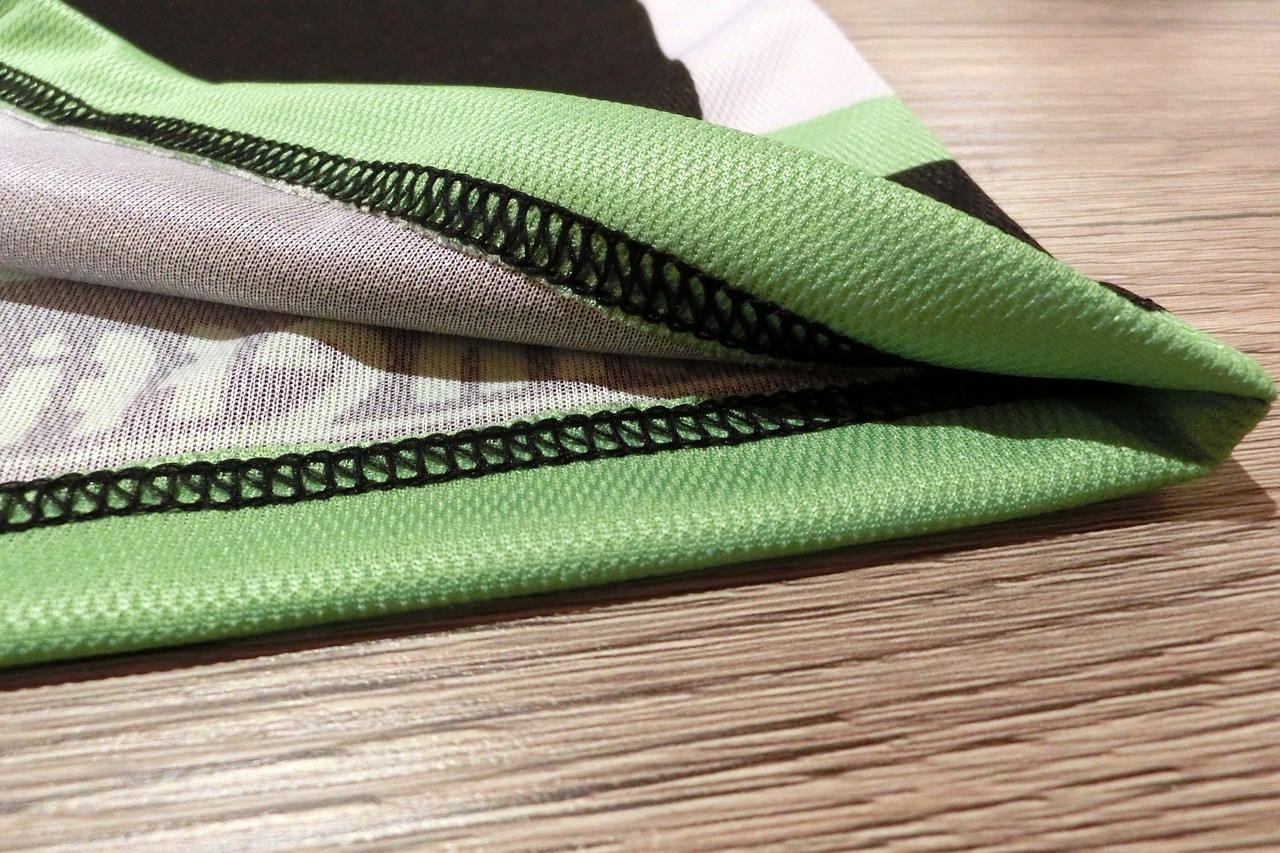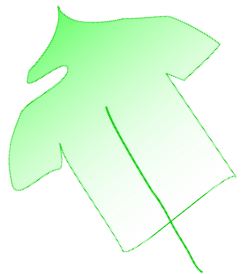Man made fibers and fabrics

Some of the man made fibers are being created from natural molecules by regenerating them into desired products, others produced from petroleum byproducts and their derivatives (e.g. plastic bottles). There are two major groups of man made fibers: regenerated cellulose fibers and synthetic fibers.
Indeed, man made fibers are fairly abundant, both as they are being most massively produced and being most commonly used around the world. That is probably due to combined effect of both low cost of fiber production and desired material features.
MAN MADE CELLULOSIC FIBERS
Of all man made fibers existing today, regenerated cellulose ones were the first to be manufactured in the beginning of 20th century... they are made of cellulose that is extracted from naturally occurring plant based materials. Cellulose is natural polymer composed of glucose molecules. It is the most abundant polymer occurring in nature, all plants generate cellulose as a primary component of their cell walls.
Some bacteria and algae also produce cellulose as a structural component for their cells. For example, cotton fibers consist of about 90 percent cellulose and almost half of the bio-chemical content of wood is cellulose. Short cotton fibers and wood pulp are two of the most frequent cellulose sources for regenerated man made fiber.
Examples of the most common regenerated cellulose fibers are rayon, acetate, viscose and triacetate.
Production
Regenerated cellulose fibers production uses naturally occurring abundant polymer - cellulose as it's raw material. Polymers are a chemical compounds, more often then not organic (meaning it contains one or more carbon atoms), distinguished by long chain of a repeatable units called monomers. Initially, those natural polymers are extracted from plant-based raw materials - most likely short cotton fiber, left after cotton processing, and wood pulp, using various types of chemical solvents.
Regenerated cellulose fibers account for more then 6% of total annual fiber production, both natural and man-made. Viscose/rayon is being the leader in this category, as it has a market share of nearly 80% of all regenerated cellulose fibers production.
There are some differences in production of different material in regenerated cellulosic category, but the main stages are fairly similar. First, natural raw material are being decomposed by adding different types of solvents that dissolves the cellulose of raw material. Resulting solution is filtered to remove all remaining coarse components.
Next, solution undergo a process called spinning, during which viscous solution is extruded through tiny holes of device called spinnerette to form them into a shape of fibers. Finally, fibers are washed and dried and then are ready to continue to fiber or fabric finishing procedures, like bleaching, dyeing, weaving or knitting the fibers into a fabric.
Advantages/ disadvantages compared to other man made + compared to natural plant based
Some of the properties of regenerated cellulose fibers are similar to those of natural fibers like cotton, linen, hemp etc. They are comfortable, breathable, soft, smooth and highly absorbent. Some additional properties can be added to fibers during manufacturing process, examples being adding or reducing fabric luster, water resistance, stretchability and more. Different textures can also be given to the fiber during manufacturing stages.
Several types of regenerated cellulosic fibers need to be dyed by special dyes as they will not react with 'regular' traditionally used dyes (for example acetate and triacetate). All fiber types in this category have lower melting point relative to natural fibers, which means they are more susceptible to some heat damage. Those are the most major disadvantages of regenerated cellulose fiber use.
Usage
Regenerated cellulose fibers are used in a wide variety of applications, including being woven or knitted into apparel and other household and industrially usable fabrics, cheaper replacement for silk, fabrics for medical uses and as desirable components for a lot of blended fabrics. Some fibers sometimes used for geo-textile manufacturing for various industrial applications.
Environmental impact
As all man made regenerated cellulose fibers are originally derived from natural substances, they are mostly biodegradable. Heavy chemical use as part of regeneration process of course are harmful for the environment. Although in recent years, largely thanks to public awakening to the environmental impact of human activities, cellulose regeneration industry developed more environmentally friendly procedures, like less energy process requirements and repeated use of waste created during the manufacturing processes.
Also, recycled materials can be used for regenerated cellulose man made fibers production. Overall, more effort is continuously made to further improve material production processes to reduce it's environmental footprint.
SYNTHETIC FIBERS
Synthetic fibers are by far the most often produced fiber type. The market share of those fibers combined is nearly 62% of total annual fiber production, that is excluding regenerated cellulose fibers. Polyester alone accounts for more then half (almost 52%) of annual production in recent years and it is growing each year.
There are many different synthetic fiber types. Some examples include - polyester, nylon, acrilic, polyamide, polyethylene, polypropylene and of course there are others.
Synthetic fibers are composed of polymers, unlike regenerated fibers though, those polymers are produced entirely by chemical processes in a production plants. Raw materials for vast majority of synthetic fibers are byproducts of oil and gas industries.
Production
There are some discrepancies in production techniques used for different synthetic fibers manufacturing, but they are generally similar. In this section we will briefly explore the most general manufacturing techniques. They all are highly technical and require sufficient knowledge of advanced chemistry and chemical engineering to understand and properly describe. This knowledge I probably do not possess, and this is not the purpose of this article, therefore we will only superficially go through some of the common stages of synthetic fibers production.
First step is to bring a chemicals together to synthesize the desired monomer molecules. Then by inducing chemical reaction between those molecules and forming chains of monomers polymerization is achieved. Those polymers then brought to a fluid or semi-fluid form either by melting or dissolving the polymers in appropriate solvent. Resulting fluid then subjected to a process called spinning during which it is forcefully extruded through a tiny holes of a spinnerett (shower head-like device) to form a fiber of required thickness.
There are several types of spinning processes - namely wet, dry, melt and gel spinning. After spinning the fibers are stretched or drawn along their axes to align the fibers along each other in most efficient way possible, some of fabric final characteristics are dependent on this manufacturing stage. Synthetic fibers can essentially be manufactured to unlimited length. Then texturing procedures are implemented. During texturing fibers are formed into yarns with required textures to create a feel and some of fabric properties of the product.
Finally, fibers and yarns are ready for finishing procedures: dyeing, weaving or knitting into a fabric and the production of a final product.
Advantages and disadvantages compared to natural fiber materials
There are undoubtedly some massive advantages of synthetic fibers, such as superior strength, toughness, mold resistivity, easy to dye, low cost of production. They can be manufactured to possess many other costume properties as well as a broad range of required properties combined.
Of course, not all is flawless and synthetic fiber usage bears some disadvantages. For example, synthetic fibers usually less breathable then natural fibers, poor moisture absorbance can make the fabric feel sticky, some might be highly flammable in high temperatures so it is advised not to bring synthetic fibers close to flames, and of course the negative environmental impact of manufacturing and finishing processes.
Use of synthetic fibers
Synthetic fibers are used for every possible textile applications- from apparel, sportswear and footwear, to furnishings, ropes, seat belts and other industrial use and more. It is used as cruelty free leather and fur alternatives as well.
Environmental and ethical impact
Synthetic fibers are not biodegradable and for the most part are not sustainable. Heavy use of chemicals during most production stages also add to a negative impact on the environment. In addition, 2016 study shows that during domestic laundry synthetic materials release microplastic particles into laundry water, which might go on and pollute the environment as released particles might be too small to be filtered out during water treatment.
In terms of workforce treatment synthetic fibers production, unfortunately, has a long way to improve. Workers can be exposed to toxic chemicals during fiber production, they are frequently overworked and underpayed.
Nevertheless, there is a hope for the better, as synthetic fibers can be recycled from plastic waste and manufacturing optimization can be done to reduce amounts of harmful chemicals use. Synthetic fibers production by itself does not harm any living creatures directly and can be made relatively ethical.
